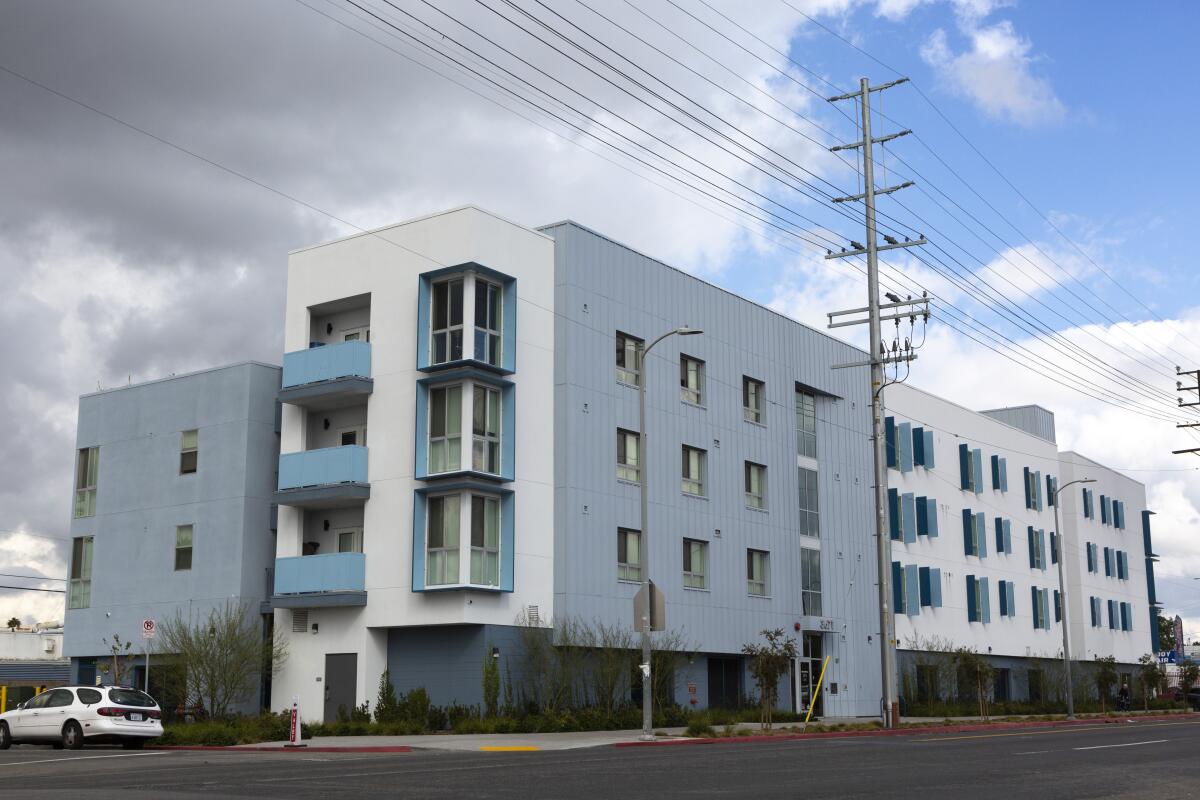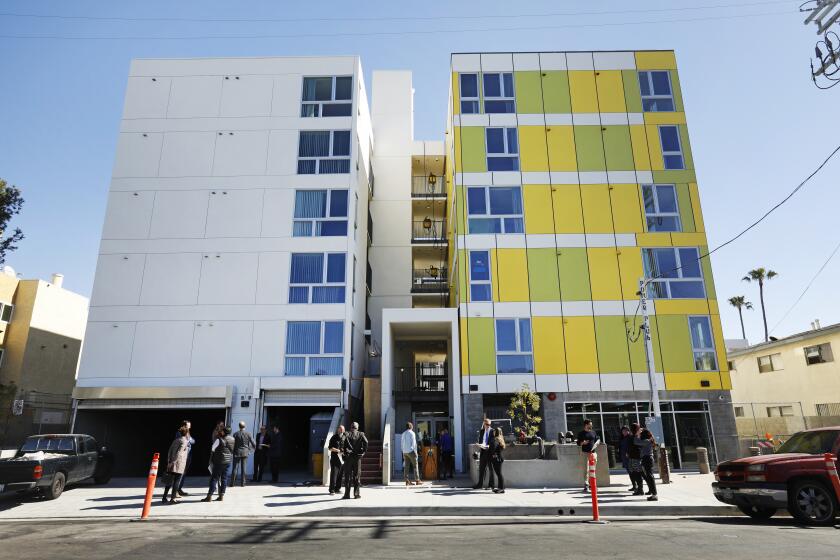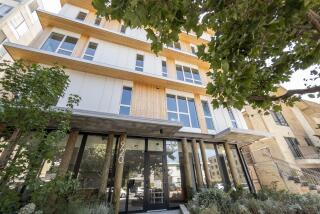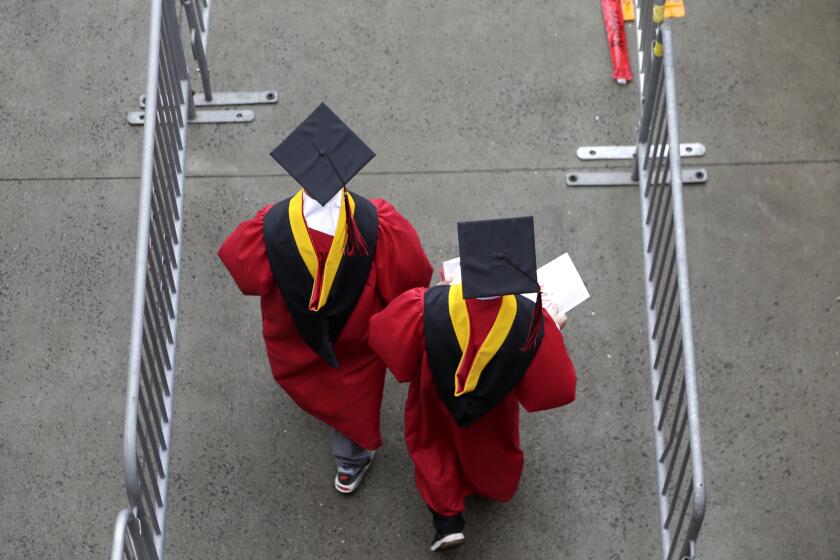Endorsement: Yes on Measure ULA

There is no greater crisis in Los Angeles than the lack of housing. About 42,000 people in the city alone are homeless. Hundreds of thousands more are barely hanging on to their housing. The county of Los Angeles has a vacancy rate of just 3.5%. Nearly half of renters in Los Angeles County spend more than half their income on rent and utilities, according to a USC survey.
The United to House L.A. (ULA) initiative on the Nov. 8 ballot would give the city a way to improve this situation by creating a robust and steady stream of funding to create and preserve affordable housing through a tax on high-dollar real estate transfers. This new revenue is essential if Los Angeles ever hopes to turn the homelessness crisis around. According to the city’s current Housing Element — a plan for housing growth through 2029 — the city needs 455,000 new units of housing, including 185,000 for lower-income residents.
The measure would increase the city transfer tax on property sales valued at more than $5 million, but less than $10 million, by 4 percentage points, which would be added to the existing 0.45% transfer tax. The transfer tax would rise to 5.5% for property sales of $10 million and above. The tax is customarily paid by the seller. Sales made to nonprofit organizations with assets under $1 billion would be excluded from the higher transfer taxes. (All sales continue to carry a 0.11% county transfer tax.)
The tax thresholds would rise with inflation (at some point the $5-million floor would probably be raised). If the tax had been in effect last year it would have generated $923 million; the amount would be likely to vary from year to year, with a projected range between $600 million and $1 billion annually.
The L.A. Times’ editorial board endorsements for statewide ballot measures, elected offices in Los Angeles city and county, L.A. Unified School District board, L.A. county superior court, statewide offices, the state Legislature and U.S. House and Senate seats.
Only about 4% of all property sales would be affected by this measure — and less than 3% of single family home and condo sales. Only 727 homes or condos sold for more than $5 million in 2021, and of those, 170 sold for more than $10 million.
Mostly, this transfer tax would involve apartment buildings and commercial land, though not a sizable number of those properties, based on last year’s sales. In 2021, 271 apartment buildings and 155 commercial buildings sold were valued at more than $5 million.
The measure’s language may possibly allow the city’s Department of Finance some leeway in applying the tax, such as basing it on how recently the building was constructed or how long it has been owned. But the rates cannot be changed.
Most of the revenue from this measure would subsidize the construction of new affordable housing, fund the rehabilitation of existing buildings such as motels and hotels into affordable housing and buy existing apartment buildings. No one living in those units would get kicked out — but as people leave, new units would become affordable ones. The rest of the revenue, about 30%, would go into a homelessness prevention fund that would provide ongoing rental or cash subsidies for at-risk seniors and people with disabilities, short-term emergency funding for people at risk of becoming homeless, and legal services to people threatened with eviction.
The measure’s proponents and policy experts estimate that the measure would fund 26,000 units of new housing in the next decade. Over the course of each year, it would also provide an estimated 40,000 households with emergency rental assistance, long-term rental assistance, utilities and basic needs, or legal counsel and eviction defense, according to the drafters of the measure. With a larger supply of affordable housing, more people with rental assistance vouchers may actually find an available apartment, which is currently a serious challenge.
Because of the racist, classist Article 34 in the California Constitution, cities need voter authorization to allow development of low-income housing.
Critics of the measure say it could drive up rents. But housing and planning experts who have researched the effects of this transfer tax maintain that the tax increase would be borne by landlords who sell, not the rental market in general.
ULA is designed to address the lack of affordable housing, which has fueled the homelessness crisis. More broadly, this lack of housing is a driver of poverty that leaves many low-wage workers living on the edge. California has the nation’s highest poverty rate because of the high cost of living, and primarily the high cost of housing.
Proposition HHH, the $1.2-billion city bond measure passed in 2016, was dedicated to one thing — building mostly conventionally financed housing for the homeless. And although it will build 8,000 units, the process has been very slow. No matter the total cost, each project was only partially funded with a subsidy capped at about $130,000 per unit, and developers had to assemble multiple sources of financing, including tax credits. All this meant some projects took years to complete. That doesn’t mean Proposition HHH has been a failed program. It is building housing as it was supposed to do.
However, the drafters of this measure have learned from HHH and placed guardrails to ensure quicker action. Sluggish city permitting processes have been sped up and ULA allows several different financing approaches to housing and homelessness prevention.
For example, the measure would allow some of the revenue to be used for buying and rehabbing motels and hotels, the acquisition of existing housing and the use of innovative building materials to build faster and cheaper. In these cases, the city would subsidize a higher percentage of the cost of these projects, cutting down on the time needed to seek out additional financing.
There would also be funding for more conventionally financed projects, where the ULA subsidy would amount to about $150,000 per unit and the developer would depend heavily on tax credits. That kind of project would take longer, much like any conventional housing project.
The measure also includes provisions to ensure that the annual revenue doesn’t get siphoned off for non-housing-related uses.
A 15-member board of overseers would advise the city Housing Department as well as the City Council and the mayor on how the funds should be spent. The mayor would pick the board members but they must be selected, in specific numbers, from backgrounds in nonprofit housing development, housing finance, construction labor unions, and advocacy for seniors and people with disabilities. Two must have been a tenant in a low-income household or have been homeless. The City Council would have the ability to alter the distribution of funds across the housing categories each year. But it would not be able to divert money from the fund to other city projects.
Los Angeles desperately needs more affordable housing. The ULA measure would provide the resources needed to make sure it gets built.
More to Read
A cure for the common opinion
Get thought-provoking perspectives with our weekly newsletter.
You may occasionally receive promotional content from the Los Angeles Times.












